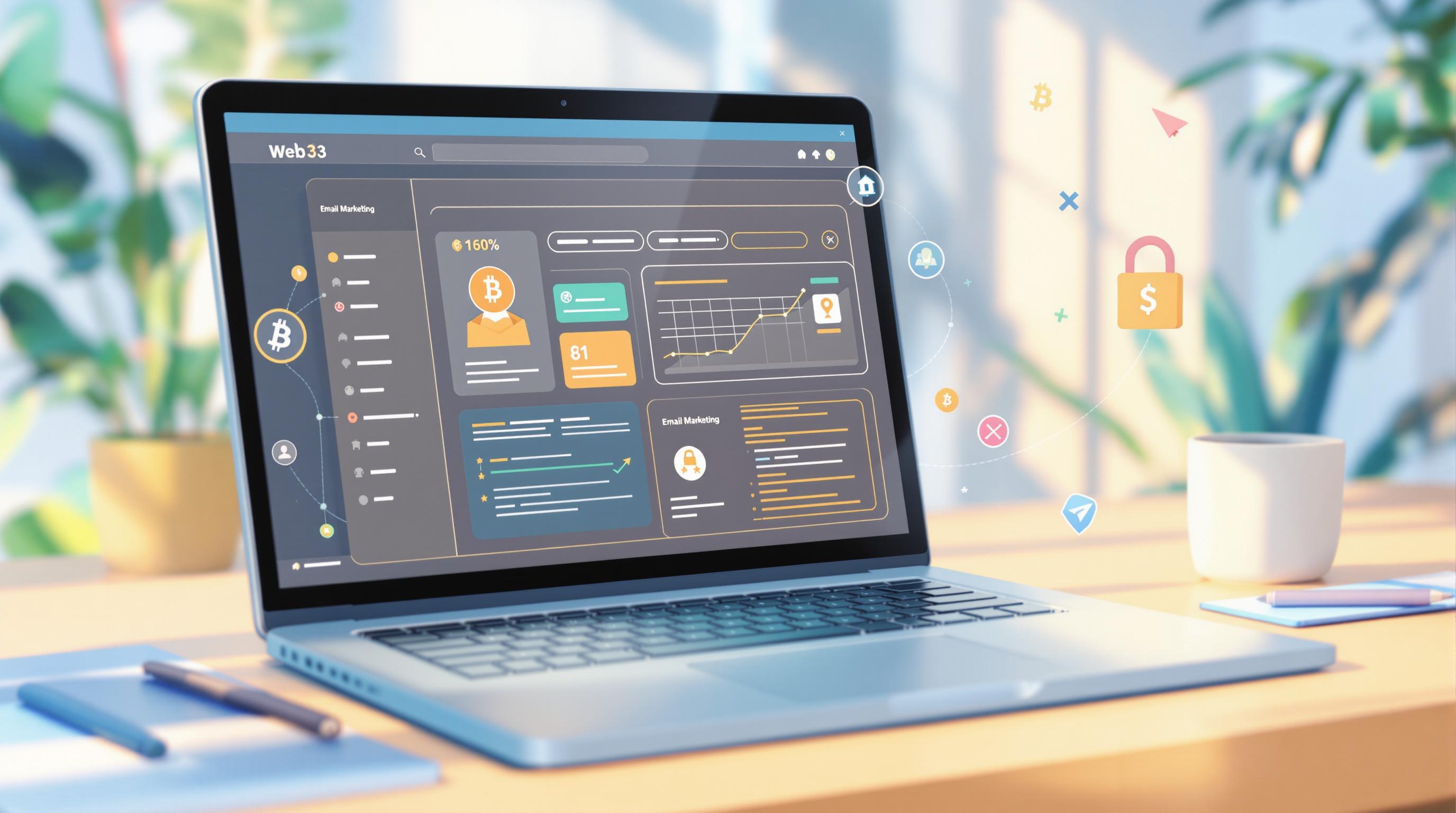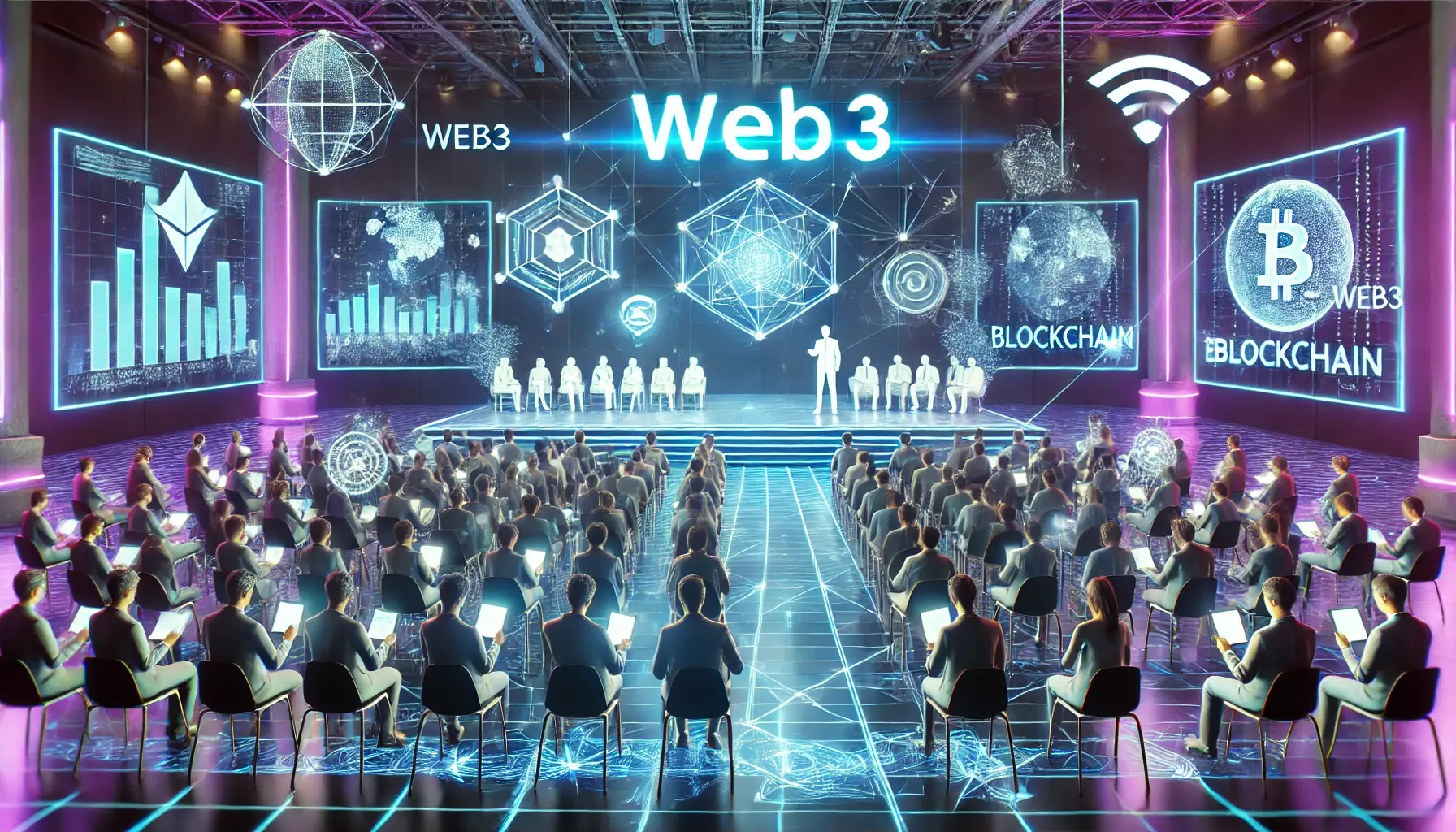Author
The Intricacies of Email Marketing in Web3 (2025 and Beyond)
Unlock the power of email marketing in Web3. Learn how to improve deliverability, engage users, and build trust for your Web3 project in 2025.
Email marketing might seem like an old-school tactic in a space dominated by social media, Telegram, and on-chain messaging, but the truth is, it’s still one of the most powerful and reliable marketing tools for Web3 brands.
That said, email marketing in 2025 isn’t as simple as blasting messages to a list and expecting engagement. Deliverability, sender reputation, email frequency, and even the challenge of burner emails all play a role in whether your strategy succeeds or flops.
So, what does it take to make email marketing work for Web3 projects in 2025? Let’s dive in.
Custom Domains & Reputation: The Key to Deliverability
You could craft the most compelling email ever, but if it ends up in spam, it’s useless. That’s why deliverability is king, and it starts with domain reputation.
Why Custom Domains Matter
Using a custom domain (e.g., marketing@yourproject.xyz) instead of a free Gmail or Outlook account:
✅ Builds credibility (nobody trusts a Web3 brand sending emails from marketing123@gmail.com).
✅ Improves deliverability (email providers flag free email addresses sending bulk messages).
✅ Gives more control over sender reputation.
Email Reputation & How to Maintain It
Platforms like Gmail and Outlook track sender reputation—if it’s bad, your emails get filtered into spam.
To protect your reputation and keep emails landing in inboxes:
- Warm up your domain: Gradually increase sending volume rather than blasting thousands of email
s at once. - Encourage engagement: The more users open, click, or reply, the better your reputation.
- Authenticate your emails: Set up SPF, DKIM, and DMARC—this tells email providers that your emails are legitimate and prevents spoofing or phishing attacks.
- Avoid spam triggers: Excessive caps, too many links, and words like “free tokens” or “urgent airdrop” can tank deliverability.
💡 Bottom line: A well-maintained sender reputation ensures your emails actually reach the people you’re trying to engage.
Emailing Volume & Frequency: Finding the Right Balance
Email marketing is a balancing act—send too many emails, and people unsubscribe. Send too few, and your audience forgets you exist.
Best Practices for Email Frequency & Volume
📩 For active users: 1–2 emails per week is ideal.
📩 For passive users: A monthly digest can help re-engage them.
📩 For high-volume sending: Warm up your IPs and monitor open rates & unsubscribes—too many ignored emails hurt deliverability.
Segmenting for Maximum Impact
Web3 audiences aren’t one-size-fits-all. Segmenting your email list makes your campaigns more effective:
- New users? Send onboarding sequences to educate them.
- Engaged users? Share exclusive insights, governance updates, and community perks.
- Lapsed users? A re-engagement campaign with incentives can bring them back.
Why Cleaning Your Mailing List Matters
A bloated email list with inactive subscribers and burner emails can hurt your engagement rates and deliverability. Email providers like Gmail and Outlook track engagement—if too many of your emails go unread, future emails are more likely to land in spam.
Best Practices for Cleaning Your Email List
✅ Regularly remove inactive subscribers. If someone hasn’t opened an email in 3–6 months, they’re unlikely to start now.
✅ Send re-engagement campaigns. Before removing users, try sending a “Still interested?” email with an option to stay subscribed.
✅ Monitor bounce rates. High bounce rates (emails that can’t be delivered) hurt your sender reputation. Remove invalid emails automatically.
✅ Segment inactive users separately. Instead of deleting them right away, move them to a lower-frequency list to test if they re-engage.
💡 Key takeaway: A smaller, more engaged list is better than a large, inactive one.
Web3-Specific Challenge: Many Users Use Burner Emails—How Do You Still Provide Value?
Web3 users love anonymity, which means many sign up with burner emails they rarely check. So, how do you keep your email marketing valuable when many recipients are using disposable inboxes?
Solutions to the Burner Email Problem
🔹 Offer immediate value (so they give a real email). Instead of just "Subscribe for updates," try "Join our email list for early airdrop access!"
🔹 Encourage engagement—ask users to confirm their email before getting perks.
🔹 Clean your list regularly—remove inactive addresses and focus on engaged users.
🔹 Use Web3-native emailing (wallet-based emails, token-gated emails).
💡 Key takeaway: If you provide enough value, people will want to use their real email.
Does Email Still Deliver Value in 2025?
Short answer: Yes—but only if done right.
Despite all the hype around decentralized communication and social media, email remains one of the few channels that Web3 brands fully control.
Think about it:
- Social media platforms (X, Telegram, Discord) can ban accounts or limit reach.
- Algorithms change constantly, making organic reach unpredictable.
- Email is direct, algorithm-free, and owned by you.
Where Email Works Best in Web3
✅ Community updates (DAO proposals, governance votes, roadmap progress).
✅ Exclusive insights (alpha reports, market analysis, token updates).
✅ Personalized engagement (wallet-linked email personalization based on user behavior).
With AI-powered personalization now at play, email marketing in 2025 is smarter than ever—predicting the best times to send, which content resonates most, and how to keep users engaged.
Final Thoughts: The Future of Email in Web3
Email isn’t dead—it’s just evolving.
The Web3 projects that will win in 2025 are the ones that:
✅ Treat email like a community-building tool (not just a promotion channel).
✅ Balance trust, relevance, and segmentation to avoid spammy tactics.
✅ Combine email with Web3-native messaging for a multi-channel approach.
✅ Keep their list clean and focused on engaged users.
At the end of the day, email is still one of the most powerful marketing tools Web3 projects have—but only if used strategically.





